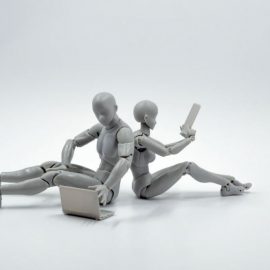

This article is an excerpt from the Shortform book guide to "The Book" by Alan Watts. Shortform has the world's best summaries and analyses of books you should be reading.
Like this article? Sign up for a free trial here.
Is everything relative? If so, what does that mean for our identity as humans?
Philosopher Alan Watts believes that each of us is the Cosmic Being. What we think of as “I” is just one expression of the Cosmic Being in a particular time and place. Our real identity is the entire collection of beings and their environments and their relationships with one another.
Continue reading for an intriguing discussion of relationalism as Watts sees it.
The Cosmic Being Framework: Everything Is Relative
Despite the limitations of language for describing the Cosmic Being, Watts elaborates on his Cosmic Being framework by explaining that everything is relative—that everything in the universe exists in relationship to its environment and other beings.
In other words, we can’t define anything except in relative terms. For example, we can only describe warm in comparison to something cold. We can define ourselves as human only by comparison to other types of organisms. Even in terms of the way our senses perceive things, we can only see a circle on a piece of paper if there’s a different-colored background that evokes the circle. Thus, everything is interconnected, and nothing can have an identity in isolation, including humans.
Watts also explains that organisms are really a process of interacting with their environment. For example, a person has to breathe air, eat food, and walk on solid ground, and people only perceive reality when their nervous system continuously interacts with the environment. These observations reinforce the idea that everything in existence depends on mutuality and relationships.
| Relativity in Science The concept of viewing everything in relative terms is called “relationalism.” It occurs in many fields of study, including color theory, theories of time and space, and quantum mechanics. In color theory, relationalism suggests that objects don’t have a true color because it’s possible for multiple observers to perceive the color differently. In A Brief History of Time, Stephen Hawking explains that, in physics, motion, position, time, and weight are all relative to the observer because there’s no absolute frame of reference. The relational quantum mechanics model also applies this principle to the microscale and suggests that particles can be in more than one state at the same time. Therefore, there’s no absolute state of any system—only measurable interactions between the system and a specific observer. For example, we can’t say that an electron is in one specific position; we can only say that an observer perceived it in a specific position. These scientific concepts reinforce Watts’s ideas that we can only observe characteristics in relative terms, and that there’s no such thing as discrete, definable entities—only interactions between systems. |

———End of Preview———
Like what you just read? Read the rest of the world's best book summary and analysis of Alan Watts's "The Book" at Shortform.
Here's what you'll find in our full The Book summary:
- Why the concept of humans as separate beings is an illusion
- Why Westerners must release their egos to end some of society's biggest problems
- How people can escape from the ego illusion






